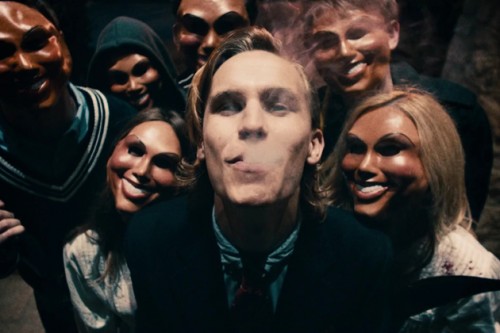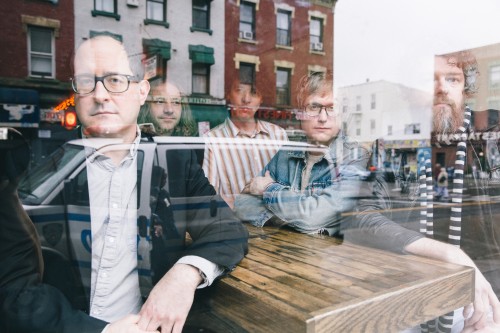By Greg Popil
Ever since the rise of blockbuster culture in Hollywood in the 1980s, the “hook,” or basic premise for a film, has largely taken precedence over characterization, plotting or even story coherence. In his excellent book “Easy Riders, Raging Bulls,” Peter Biskind wrote about how executives, led by the likes of Don Simpson and Jerry Bruckheimer, took back the power from movie directors. They began issuing demands for films that featured broad ideas that could be explained to viewers in 30 seconds or less, to make advertizing easier. The hook was the film.
Simpson and Bruckheimer would have loved “The Purge,” the surprise smash hit that also contained last year’s easiest-to-digest hook. The hook is a doozy, though: for 12 hours every year, as an outlet for human aggression, all crime is legalized. People are not only allowed, but actively encouraged by the government, to “purge” their hatred by rampaging to their hearts’ content.
A lot of ink has been spilled decrying the unlikeliness of this premise and questioning how well it would even work (the film says that unemployment is under 5 percent and crime for the rest of the year is practically nonexistent). But these criticisms miss the point: half of the great alternate-universe episodes of “The Twilight Zone” wouldn’t hold up under a microscope either. “The Purge’s real problem (though an understandable one, given its minuscule budget) was telling a macro story in as micro a manner as possible, focusing on a pair of yuppies (Ethan Hawke and Lena Headey) desperately fending off purging home invaders.
It’s up to “The Purge: Anarchy,” then, to introduce us to the rest of this world, and for the most part, it does an admirable job. Returning writer/director James DeMonaco expands his world to include five protagonists: a waitress and her daughter (Carmen Ejogo and Zoe Soul) who are dragged into the streets on Purge night against their will; a young couple (Kiele Sanchez and Zach Gifford) whose crumbling marriage is put to the test when their car breaks down near a gang of masked Purgers; and the ubiquitous Man with No Name, a Mysterious Past and Lots of Guns (Frank Grillo), whom the others eventually rally around.
Once the token exposition is out of the way, the siren rings and the Purge begins, DeMonaco is able to cut loose, and he does a commendable job bringing some real thrills into his open-air setting. Scenes of busloads of gangs rolling into town to purge recalls Walter Hill’s “The Warriors,” and the chaos of the burning city, which is admirably brutal (no attempts for the lucrative PG-13 ratings can be found), recalls John Carpenter at his finest. DeMonaco is not at Hill or Carpenter’s level yet, but he’s clearly an enthusiastic student of their game.
A lot of the gains over the first movie, however, are offset by losses, particularly in the acting column. Hawke and especially “Game of Thrones’” Headey were a very strong foundation for “The Purge,” and none of the cast of the new movie can match them. If DeMonaco is going for a John Carpenter vibe, then the man with no name is his Kurt Russell character, and Grillo can’t match Russell’s gravitas or light touch (though, to be fair, there are few who can). His story is meant to be mysterious, but it’s so easy to discern from his very first scene that they might as well hand out flyers at the theater spelling it out to the audience. There are no bad performances, but no one stands out either. The best actor in the movie by far is Michael K. Williams, a.k.a. the guy who stood head-and-shoulders above strong ensembles on “The Wire” and “Boardwalk Empire,” but he has no more than five minutes of screen time.
Williams’ role, as an Anonymous-like resistance leader who opposes the Purge, points to the other alternately interesting and problematic subplot: the quasi-authoritarian U.S. government uses the Purge as an excuse for the poor to kill each other off while the rich either stay sheltered in their high-security homes or kill off poor people themselves with vastly superior weaponry. This is a neat idea, and it reaches its peak with a wonderfully surreal auction sequence, featuring soap opera veteran Judith McConnell as a high-class auctioneer of flesh. Unfortunately, “Anarchy” doesn’t leave its government figures as menacing abstracts, lording over their new America as near-deities, but has to goose audience hatred by having them hire police thugs go out and kill people themselves in riot squad gear. DeMonaco clearly has ambitions for this series, which he’ll get a chance to realize now that the movies are hits. He’s off to a promising start, but it’s up to him now to make the actual films match the hook.
Rating: 58/81




Leave a Reply